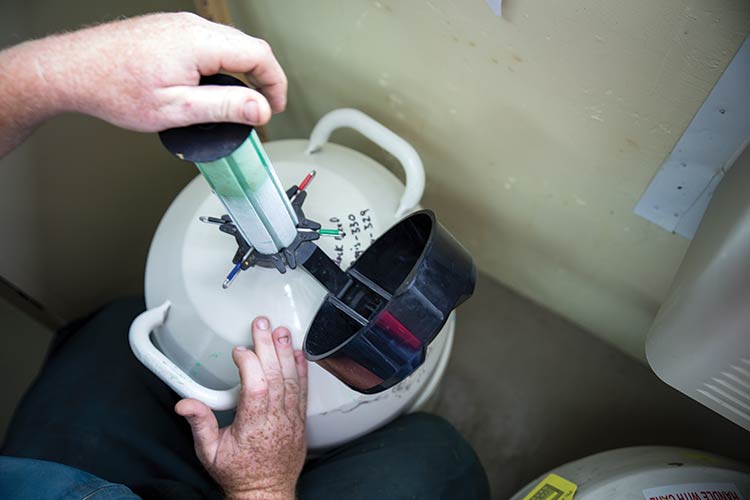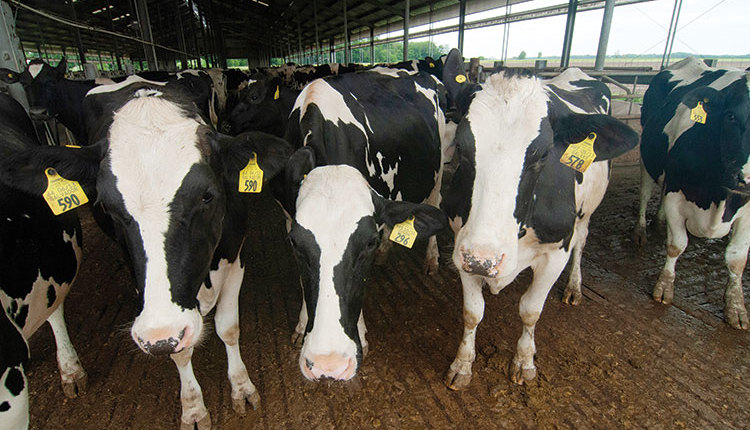
John Wooden, a highly successful basketball coach for the UCLA Bruins, is quoted to have said: “It’s the little details that are vital. Little things make big things happen.”
Isn’t that true when referring to everything that is done in managing a dairy operation?
Just think about all the minute parts that make up the engineering of the milking machine and every other piece of essential equipment upon which you rely to produce “Nature’s most perfect food — milk.”
Let’s take a look at some of the little details that should be routinely reviewed and inspected in managing the A.I. program.
Administering products
Take time to help employees understand the difference between the actions of gonadotropin-releasing hormone (GnRH) and prostaglandin F2α (PGF). GnRH is given to induce ovulation, whereas PGF is administered to regress the corpus luteum before estrus and ovulation can occur.
Injection sites should be clean. Avoid administering product through mud- or manure-caked hair.
Never use a needle larger than 18-gauge nor smaller than 1.5 inches in length to inject a synchronization product. Inject deep into the muscle to prevent flow back of product.
Give the correct dose of GnRH products. Always consult the label. Most GnRH products are dosed at 50 micrograms per cc to administer a standard dose of 100 micrograms or 2 cc of product. One product (GONAbreed) is dosed at 100 micrograms per cc, so administer only 1 cc. Again, be certain you use the proper needle size to ensure that 1 cc is injected deep into the muscle.
For the right dose of PGF products, consult the label. Most PGF products are dosed to administer 2 cc. Several U.S. products require 5-cc doses (such as the original Lutalyse and Prostamate).
Have a solid A.I. routine
Store the semen tank on a wooden pallet off the concrete floor.
Regularly and thoroughly clean your thaw box and its contents.
Check thaw box water temperature with a standard thermometer. Temperature cards may eventually fail to work properly. The most commonly used thaw box, by the brand name CITO, has an adjustable temperature gauge that is found by removing the bottom of the thaw box.
When searching for the desired straw, remove the canister from its storage position and raise it up until the cane tops are 2 to 3 inches below the top opening of the tank. Only expose other straws in the canister to the warmer temperatures of the tank’s neck for just a few seconds.
Thaw semen according to your supplier’s recommendations. When in doubt, research has shown that straws of semen should be thawed in 95ºF (35ºC) water for 45 seconds.
Warm breeding guns before inserting straws and applying the breeding sheath to prevent cold shock to thawed sperm. Preventing cold shock to properly thawed sperm is critical in winter temperatures but is also a problem in more mild weather because sperm can cool very quickly to match the environmental temperature.
Straw cutters are designed to quickly cut off the sealed or crimped end of the straw to the proper length to allow a good fit into the breeding sheath. When using scissors, cut straws 1/4 inch below the sealed end at a 90-degree angle.
Use an A.I. gun warmer to keep thawed semen at 95ºF (35ºC) until ready to A.I. breed.
Clean daily the insides of the A.I. gun warmer or insert a clean breeding sleeve into the warmer before loading guns.
Consider using sheath protectors (a plastic insert pulled over the breeding gun) to protect the gun and the tip of the straw until you have passed the cervix and are ready to deposit the semen in the uterus.
Don’t thaw too many straws at one time. A rule of thumb is to thaw only as many straws as you can use in 10 to 15 minutes. Placing several straws into the thaw box at one time allows them to stick (freeze) together and prevents uniform and rapid thaw of straw contents. Survivability of frozen sperm during the thawing process is approximately 65 percent. Proper rapid thawing of straws is important.
Routinely clean breeding guns with soap and water after use. Thoroughly rinse to eliminate soap, and then dry before reinserting the plunger into the breeding gun.
Deposit semen into the body of the uterus (target). Be careful to not accidentally pull back the A.I. breeding gun from the uterus while depressing the plunger to deposit the semen.
A.I. refreshers
Engage your veterinarian, extension specialist, or A.I. representative to find or conduct a refresher course for your A.I. technicians. Bovine reproductive tracts can be obtained from a local slaughter facility to review anatomy and semen placement.
A number of YouTube videos may be used for retraining purposes. Simply use key words such as “bovine A.I. tutorials” in your internet search engine. Some videos are better than others, but they all give good tips for further discussions.
Are your best technicians conducting most of the inseminations? Your records can reveal who is doing the best job. Make sure, however, you are making fair comparisons of technicians’ performance. Don’t compare results of heifer breeders to lactating cow breeders or first-service cow breeders to repeat-service cow breeders.
Inspect what you expect. In other words, follow through when changes or corrective suggestions are made to ensure everyone is on the same page.
Listening to suggestions of your employees can improve efficiency and working conditions. J.W. Marriott, hotel magnate, is quoted to say: “If you take care of your employees, they will take care of your customers (may we add ‘cows’), and your business will take care of itself.”
Put it together
Regular inventory of work habits, details, and actions relating to reproductive management of cows and heifers can improve pregnancy rates of the herd. Happy A.I. breeding!







